This article was medically reviewed by Luba Lee, FNP-BC, MS. Luba Lee, FNP-BC is a Board-Certified Family Nurse Practitioner (FNP) and educator in Tennessee with over a decade of clinical experience. Luba has certifications in Pediatric Advanced Life Support (PALS), Emergency Medicine, Advanced Cardiac Life Support (ACLS), Team Building, and Critical Care Nursing. She received her Master of Science in Nursing (MSN) from the University of Tennessee in 2006.
This article has been viewed 24,586 times.
Surfer’s eye, formally known as pterygium, is a serious condition in which abnormal tissue grows around the eye and threatens a person’s vision. It gains its name from surfers, who suffer it at a higher rate because of their exposure to wind, sand, and other harsh conditions. Others, too, who faced similar environment conditions may develop surfer’s eye. However, by investigating ways to resolve your condition and by taking steps to prevent future occurrences, you’ll be able to successfully treat surfer’s eye.
Steps
Treating Surfer’s Eye Without Surgery
-
1Consult an ophthalmologist. An ophthalmologist is a medical professional who specializes in eye care. If you think you have surfer’s eye, make an appointment with an ophthalmologist or have your primary care physician refer you to one.
- The doctor will examine you and question you about your symptoms.
- An ophthalmologist will use special equipment to examine your eye in detail.
- The doctor may perform further diagnostics to confirm their diagnosis.[1]
-
2Use non-steroid eye drops. One of the most common ways of treating surfer’s eye is with topical lubrication drops. These drops will reduce dryness and alleviate other symptoms.[2]
- Eye drops may be prescription or over-the-counter. An example is GenTeal drops.
- Your doctor may also prescribe artificial tears. This might include, for example, Refresh Tears.
Advertisement -
3Use steroid drops. Steroid eye drops are sometimes prescribed as an adjunct to regular eye drops. These drops help reduce inflammation, which in turn, reduces other symptoms.
- Steroid drops will most likely be used on a short-term basis.
- Only use steroid drops under the consultation of your medical professional, as they could increase your chance of other eye diseases.
- Steroid drops are often prescribed when symptoms are severe.[3]
Using Surgery to Treat Surfer’s Eye
-
1Have surgery. In severe cases of surfer’s eye, your ophthalmologist must surgically remove the growth – pterygium – from your eye. By removing the growth, your doctor will remove abnormal cells and enable you to see correctly.
- Surgery is only needed in severe circumstances, when abnormal tissue blocks sight or threatens a person’s ability to see.
- The procedure usually lasts less than an hour.
- Surgery to remove pterygium may cause or worsen astigmatism.[4]
-
2Ask your doctor techniques to inhibit pterygium growth in the future. In many cases, doctors will use techniques that will inhibit future abnormal tissue growth into their surgery. By using these techniques, you’ll substantially lower the chance of developing surfer’s eye in the future.
- Ask about anti-metabolites. These will slow or inhibit the growth of pterygium cells that may be left over after surgery. A common anti-metabolite used to treat surfer’s eye is Mitomycin C.
- Your doctor may also place a barrier – a thin membrane – over the site of surgery to inhibit the growth of abnormal tissue.[5]
-
3Wear an eye patch after surgery. An important part of providing care after your surgery is to wear an eye patch. An eye patch will protect your eye and allow it to heal properly.
- You’ll likely have to wear an eye patch for one or two days after surgery.
- Avoid dry or dusty environments for up to a week after surgery.
- You will most likely be able to return to work or your usual activities the day after surgery.[6]
Preventing Future Occurrences
-
1Protect your eyes from ultraviolet (UV) light. Since exposure to UV light is one of the great contributing factors to the development of surfer’s eye, you should substantially limit your exposure to UV.
- Limit time outside when the UV index is high. Most weather websites and applications will reference the UV level outside on any given day.
- Wear a wide-brimmed hat and polarized eyeglasses or sunglasses that are rated with UV protection.
- Consider wraparound sunglasses if you spend a prolonged amount of time outside.[7]
-
2Avoid spending time in environments that are excessively dry and dusty. Ultimately, by limiting your time in environments that are dry and dusty, you’ll reduce the chance of another occurrence of surfer’s eye. This is because dry and dusty environments aggravate the eye and trigger the growth of pterygium.
- Limit time in dry and dusty environments. For instance, if you need to work outside and you live in the Desert Southwest, limit this time to an hour a day or less.
- If you have to spend time in dry and dusty environments, make sure you wear protective glasses.[8]
-
3Consult your doctor about ways to lubricate your eyes in dry environments. One of the best ways to counter the dangers of dry and dusty environments and to help prevent surfer’s eye is by making sure your eyes are properly lubricated.
- Talk to your doctor about solutions that may be good for you.
- Consider using artificial tears to keep your eyes lubricated.
- Think about using eye drops to address irritation caused by exposure to dry or dusty environments.
- Your doctor might also prescribe mitomycin eye drops to be used after surgical removal of abnormal tissue.[9]
Educating Yourself About Surfer’s Eye
-
1Recognize the symptoms of surfer's eye. Surfer's eye can be typically seen on the eye as a yellow bump or white overgrowth of the eye. If you are uncertain whether or not you have surfer's eye, you should look out for:
- Yellow spots on the white of the eye
- Redness or swelling of the eye
- Blurry vision
- Dry, gritty itchy eyes
- Feeling as though there is something in your eye[10]
-
2Learn the basics about surfer’s eye. Surfer’s eye is a condition that is associated with growth of tissue over a portion of the eye. This tissue may partially block your vision and cause discomfort or irritation.
- Abnormal tissue growth is also known as “pterygia.”
- Surfer’s eye often develops in people who spend considerable amounts of time outside in dry or windy conditions.[11]
-
3Understand the causes of surfer’s eye. While the exact cause of surfer’s eye is not known or agreed upon by medical professionals, there are a variety of contributing factors that are associated with its development. Medical professionals, though, commonly point to several factors as causing surfer’s eye. Some include:
- Long-term exposure to UV light. People who work outside in sunny environments are especially prone to the condition.
- Exposure, long-term, to dry and dusty environments.
- Long-term exposure to windy environments, which tend to dry eyes out.[12]
-
4Know that severity of surfer’s eye varies from person to person. While some cases of surfer’s eye are severe enough to require immediate treatment, others may not require treatment at all. In the end, you and your doctor must determine the extent that surfer’s eye threatens your vision.
- Some people who suffer from surfer’s eye may not exhibit symptoms other than abnormal tissue growth.
- Many individuals who suffer from surfer’s eye may not need to undergo surgery or other invasive procedures.
- Only a medical professional can determine the severity of your surfer’s eye.[13]
References
- ↑ https://www.aao.org/eye-health/diseases/pinguecula-pterygium-diagnosis-treatment
- ↑ https://www.aao.org/eye-health/diseases/pinguecula-pterygium-diagnosis-treatment
- ↑ http://emedicine.medscape.com/article/1192527-medication
- ↑ https://www.aao.org/eye-health/diseases/pinguecula-pterygium-diagnosis-treatment
- ↑ https://www.ncbi.nlm.nih.gov/pubmed/3211484
- ↑ https://my.clevelandclinic.org/health/diseases/22497-pterygium-surfers-eye
- ↑ https://my.clevelandclinic.org/health/diseases/22497-pterygium-surfers-eye
- ↑ https://www.aao.org/eye-health/diseases/pinguecula-pterygium-diagnosis-treatment
- ↑ https://my.clevelandclinic.org/health/diseases/22497-pterygium-surfers-eye
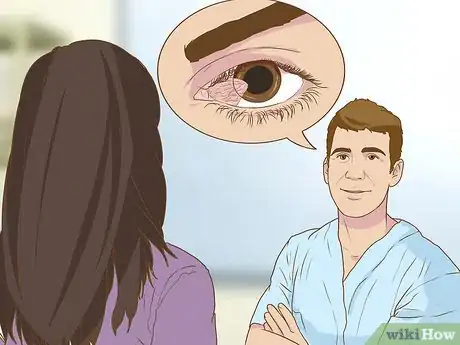
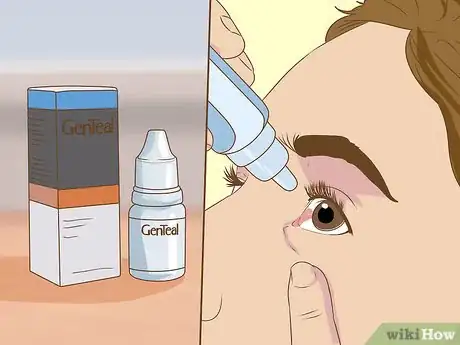
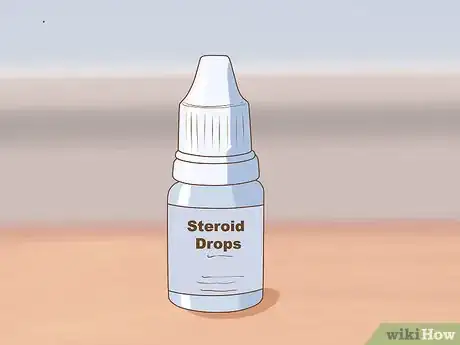
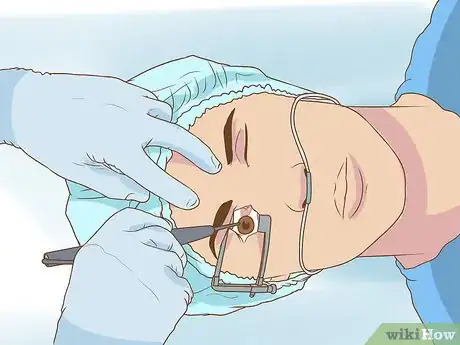

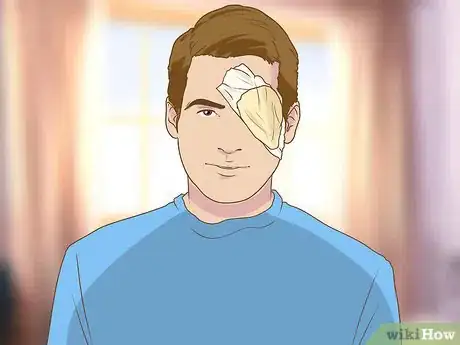

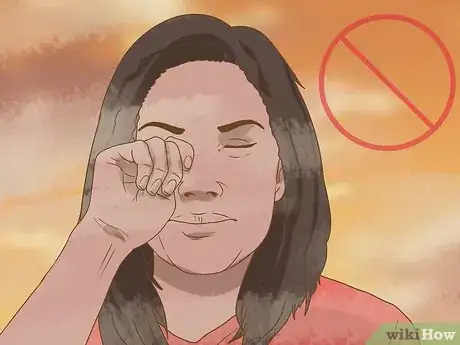
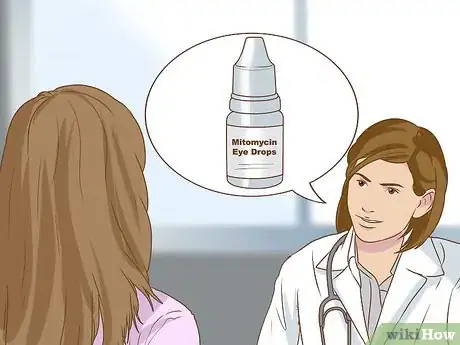



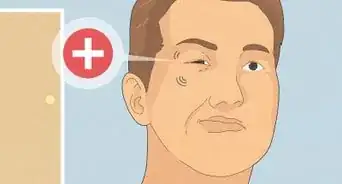

-Step-3-Version-2.webp)


















-Step-3-Version-2.webp)



































Medical Disclaimer
The content of this article is not intended to be a substitute for professional medical advice, examination, diagnosis, or treatment. You should always contact your doctor or other qualified healthcare professional before starting, changing, or stopping any kind of health treatment.
Read More...